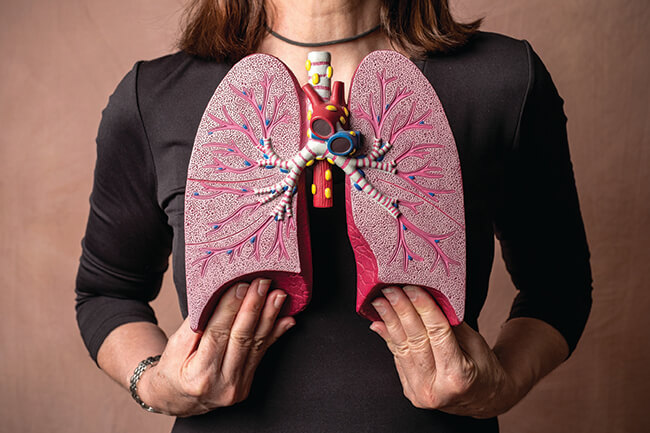
We asked allergists and pulmonologists what patients need to know about the two chronic respiratory diseases.
Q: What are similarities and differences between asthma and chronic obstructive pulmonary disease (COPD)?
Asthma and COPD share similar symptoms – persistent cough, wheezing, labored breathing during exercise, chest tightness and shortness of breath.
COPD involves several progressive lung diseases that develop over time, including emphysema and chronic bronchitis. Factors that point to a COPD diagnosis include:
- increased mucus or phlegm;
- a greater frequency of respiratory tract infections;
- history of smoking cigarettes;
- exposure to secondhand smoke or environmental pollutants.
Most people with COPD develop symptoms after the age of 40 following years of exposure to lung irritation, particularly smoking. Other signs that could suggest COPD include fatigue, weight loss and morning headaches.
Q: Is one more common than the other?
Approximately 24 million people in the United States have asthma, including 6.2 million children, according to the Centers for Disease Control and Prevention (CDC).
More than 11 million Americans have COPD, but some 12-14 million more people may have the disease and not know it. COPD is sometimes misdiagnosed as asthma.
Q: Which is more serious?
Asthma and COPD are both serious, potentially life-threatening conditions. Both are treated with quick-relief inhalers for respiratory emergencies and daily controller medications that help keep airways open, reduce mucus and improve breathing.
Asthma
Asthma results in approximately 3,600 deaths per year, or 1 in 10 people with the disease. Along with medications, symptoms can be managed by avoiding environmental allergens and irritants that cause inflammation.
COPD
Approximately 120,000 people die of COPD each year, making it the third leading cause of death in the United States. It can lead to permanent lung damage. You can stop the progression of the disease if you catch it early enough. Medications are vital but you also must reduce exposure to smoke or pollution that is damaging your lungs.
If you smoke and you have asthma or COPD, it’s critical that you stop; ask your doctor about smoking cessation programs. It’s also important to get annual pneumonia and flu vaccinations to ward off viruses.
Asthma and COPD symptoms can change over time, which means medication needs may change, too. Work closely with your doctor to evaluate which medications work best for you at any given point in time.
Q: Can asthma progress to COPD?
Asthma does not necessarily lead to COPD, but a person whose lungs have been damaged by poorly controlled asthma and continued exposure to irritants such as tobacco smoke is at increased risk of developing COPD.
It’s possible for people to have both asthma and COPD – this is called Asthma-COPD Overlap, or ACO.
Treatment for ACO usually involves aggressive medication with three drugs instead of two: an inhaled corticosteroid, a long-acting bronchodilator inhaler and an anticholinergic (muscarinic antagonist) medication. Annual pneumonia and flu vaccinations, smoking cessation assistance and pulmonary rehabilitation are also recommended.
Delayed diagnosis is common with ACO, so if symptoms worsen or persist, request further testing from your doctor.
Reviewed by Purvi Parikh, MD

 810304 Eaton Place, Suite 100
810304 Eaton Place, Suite 100